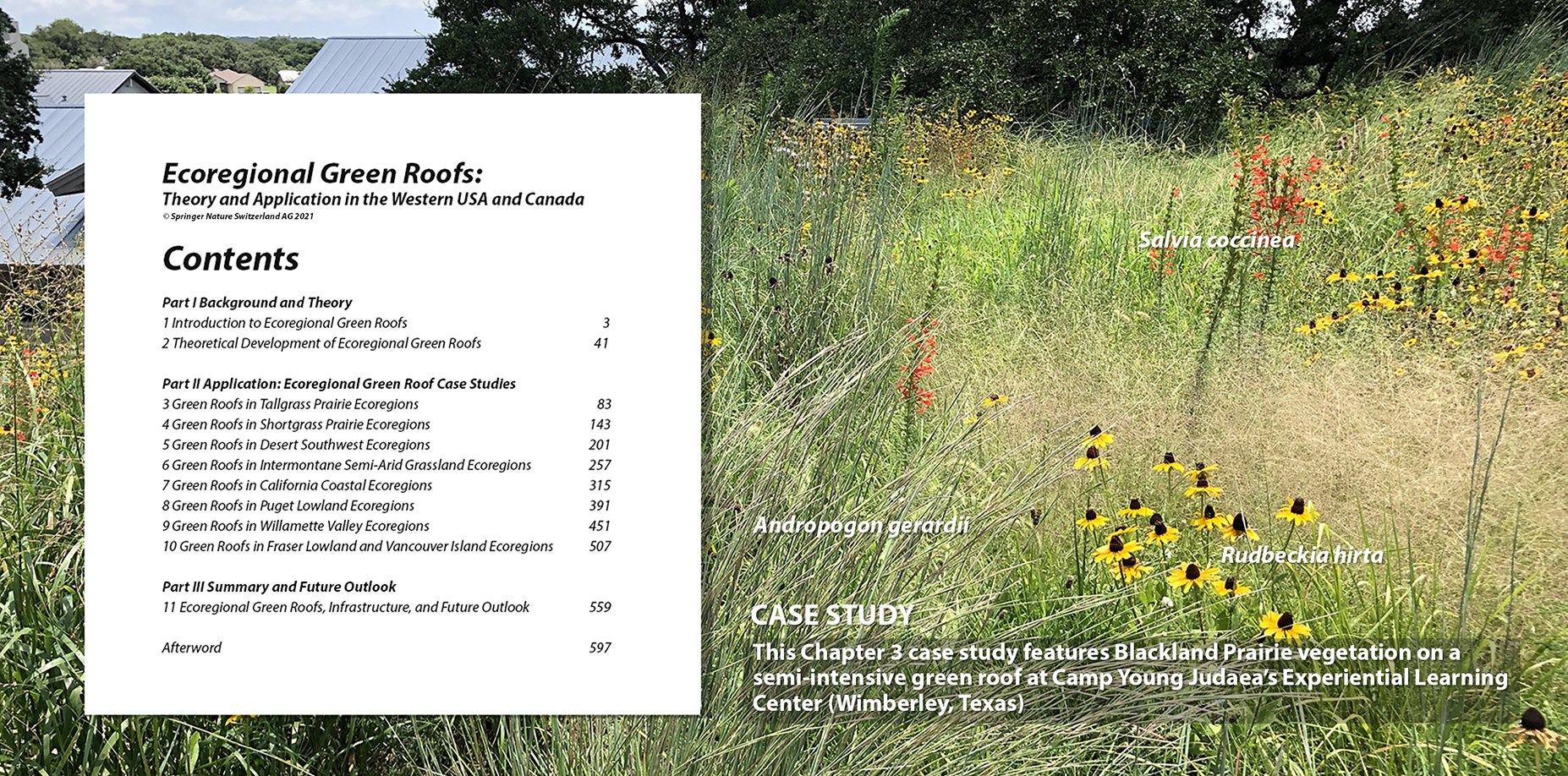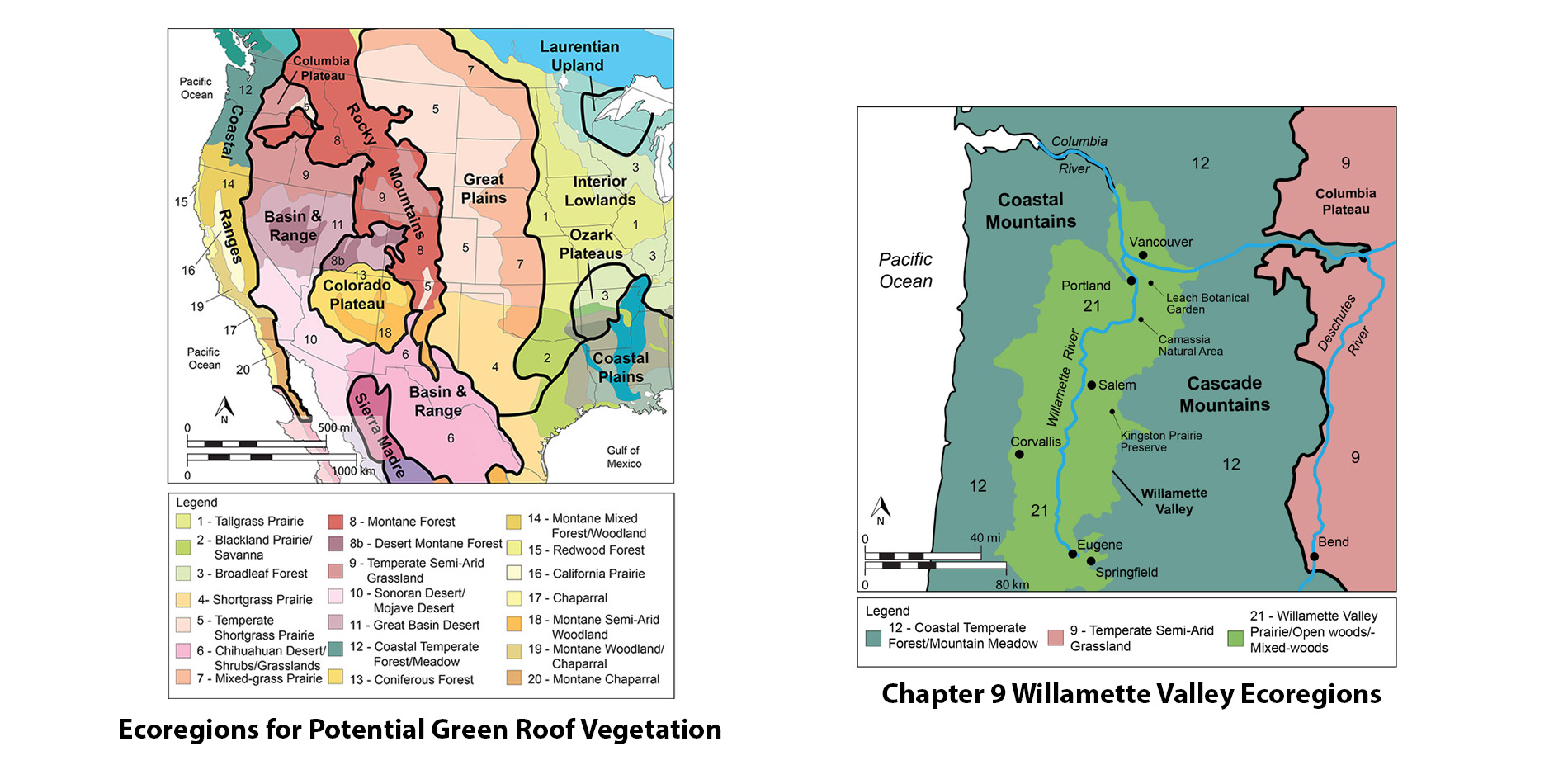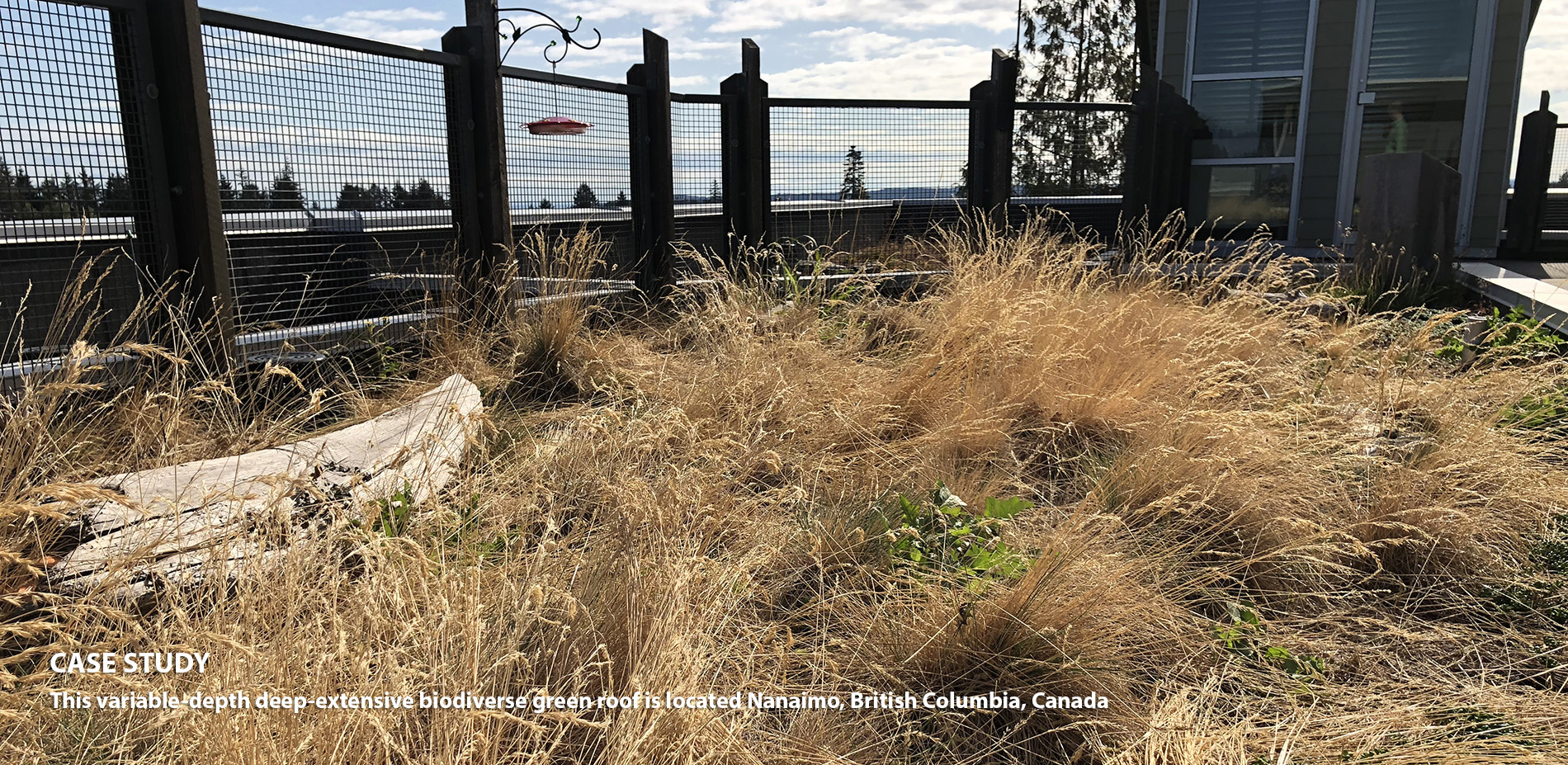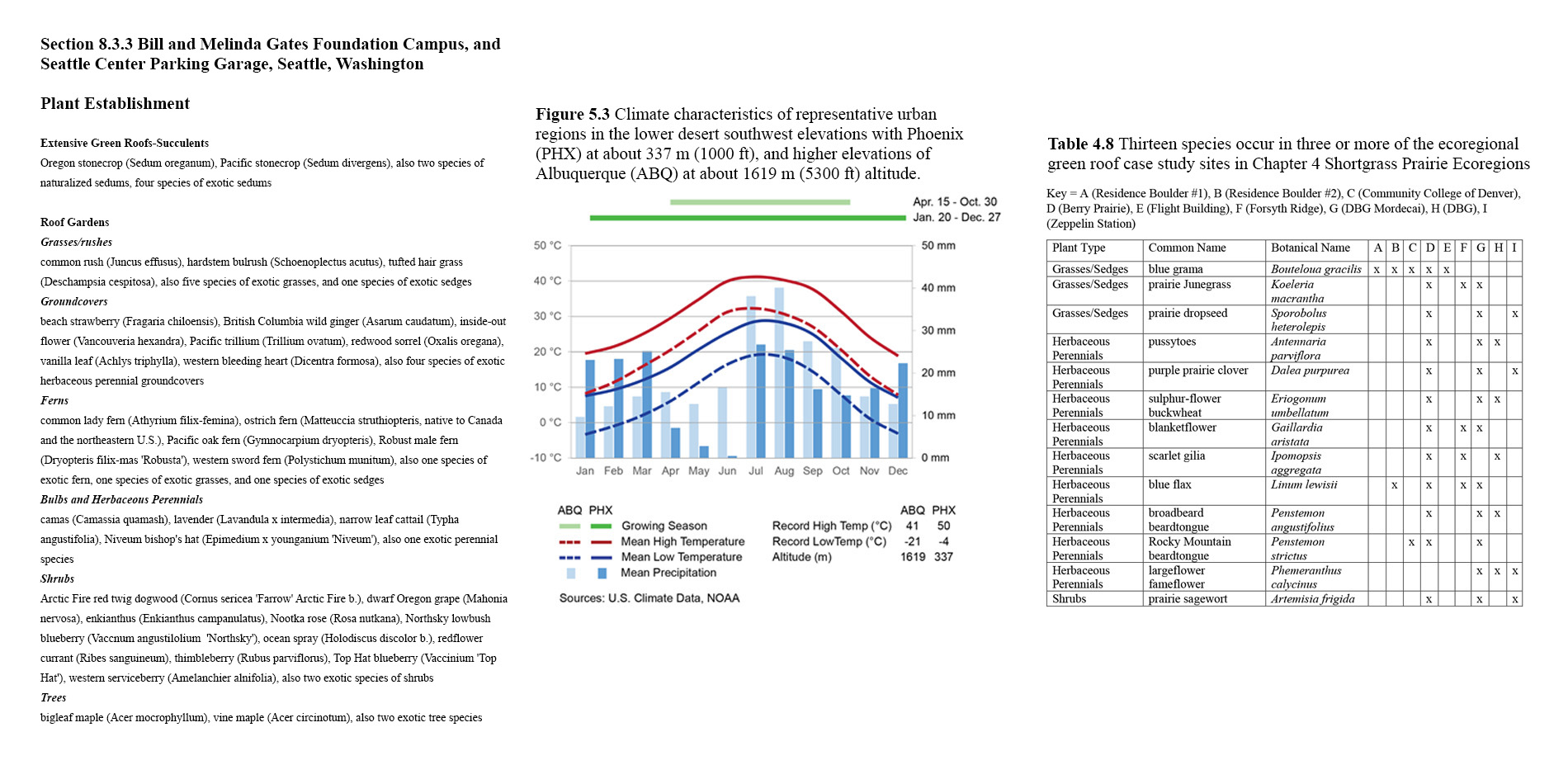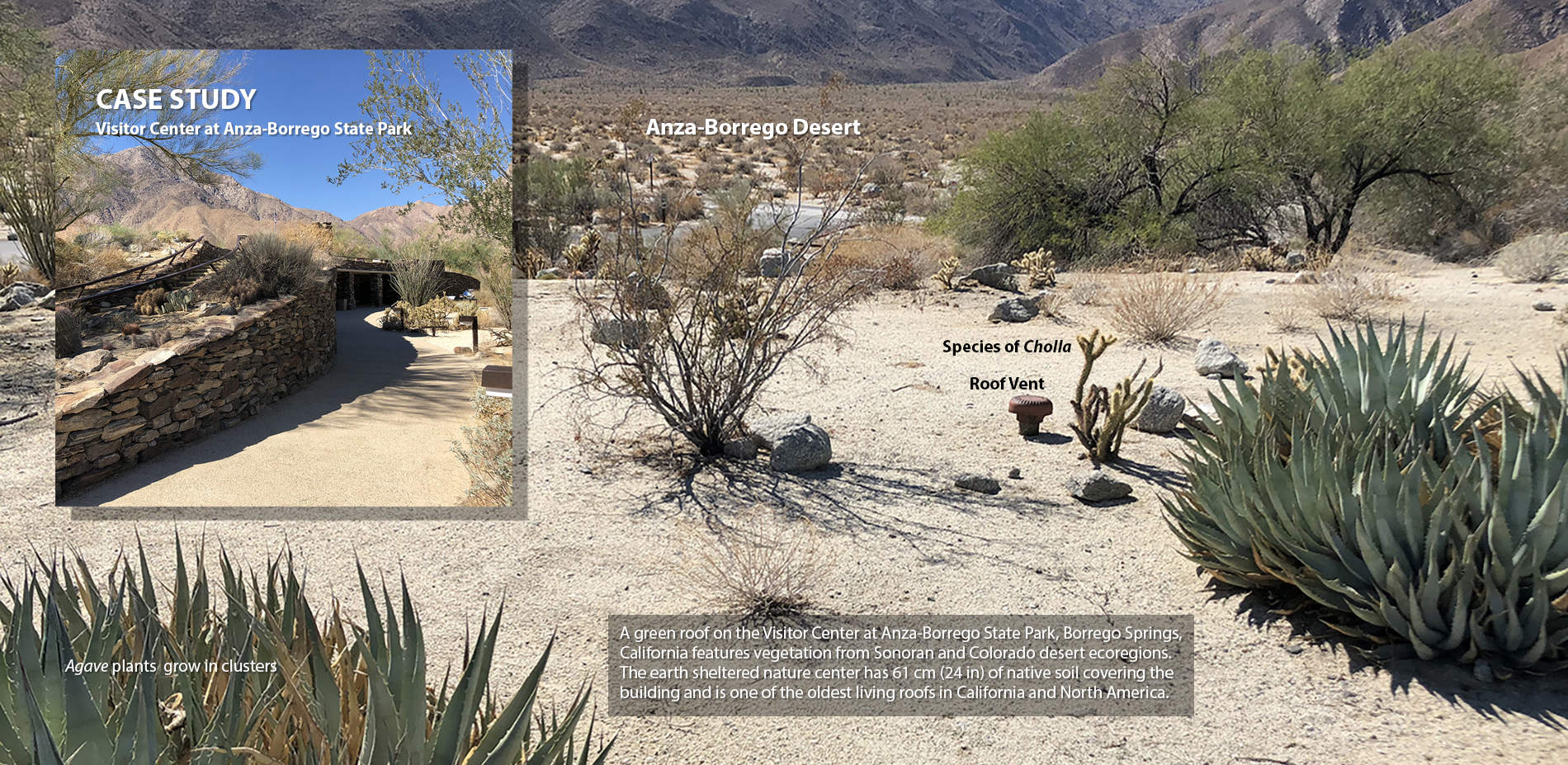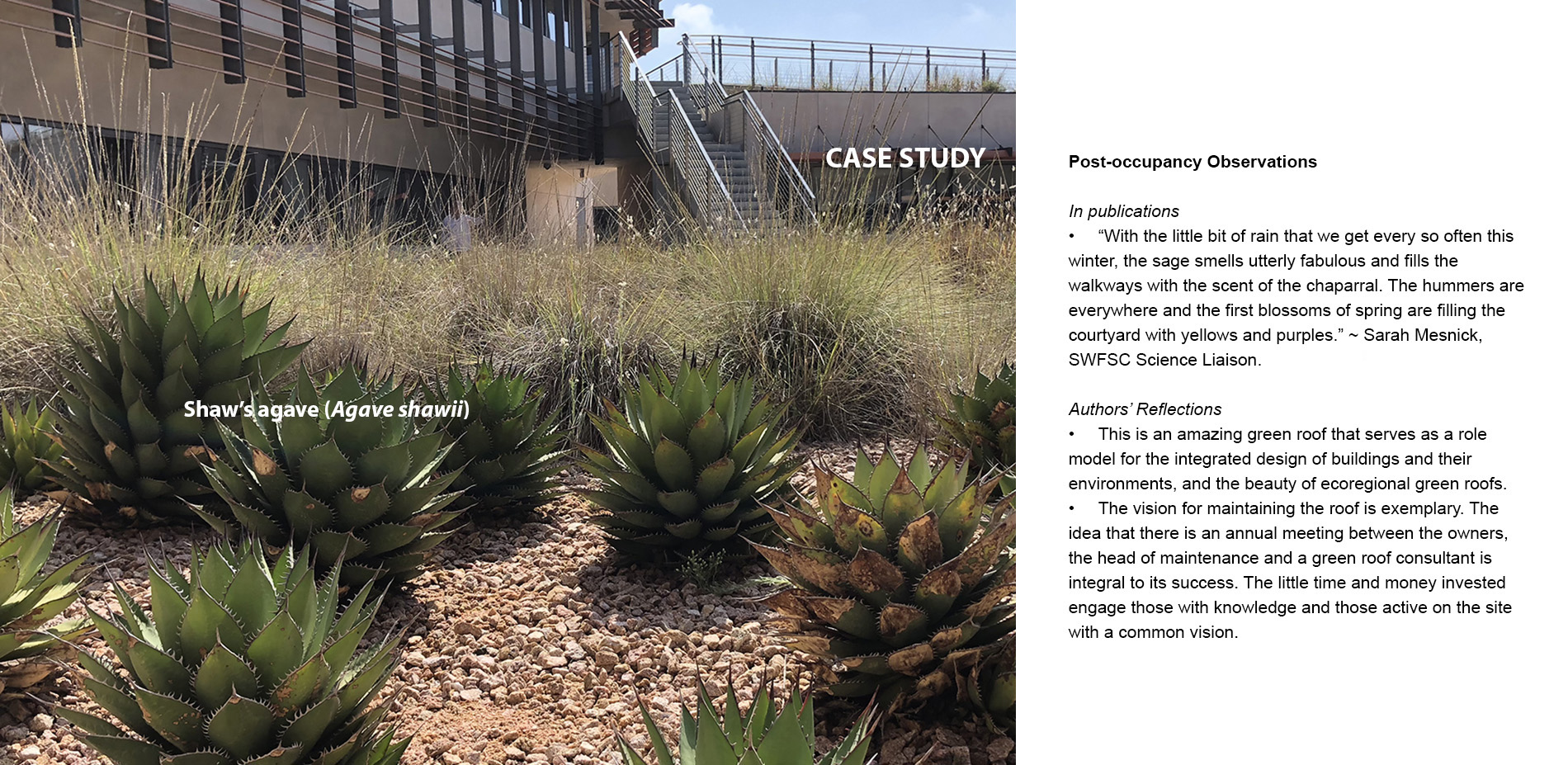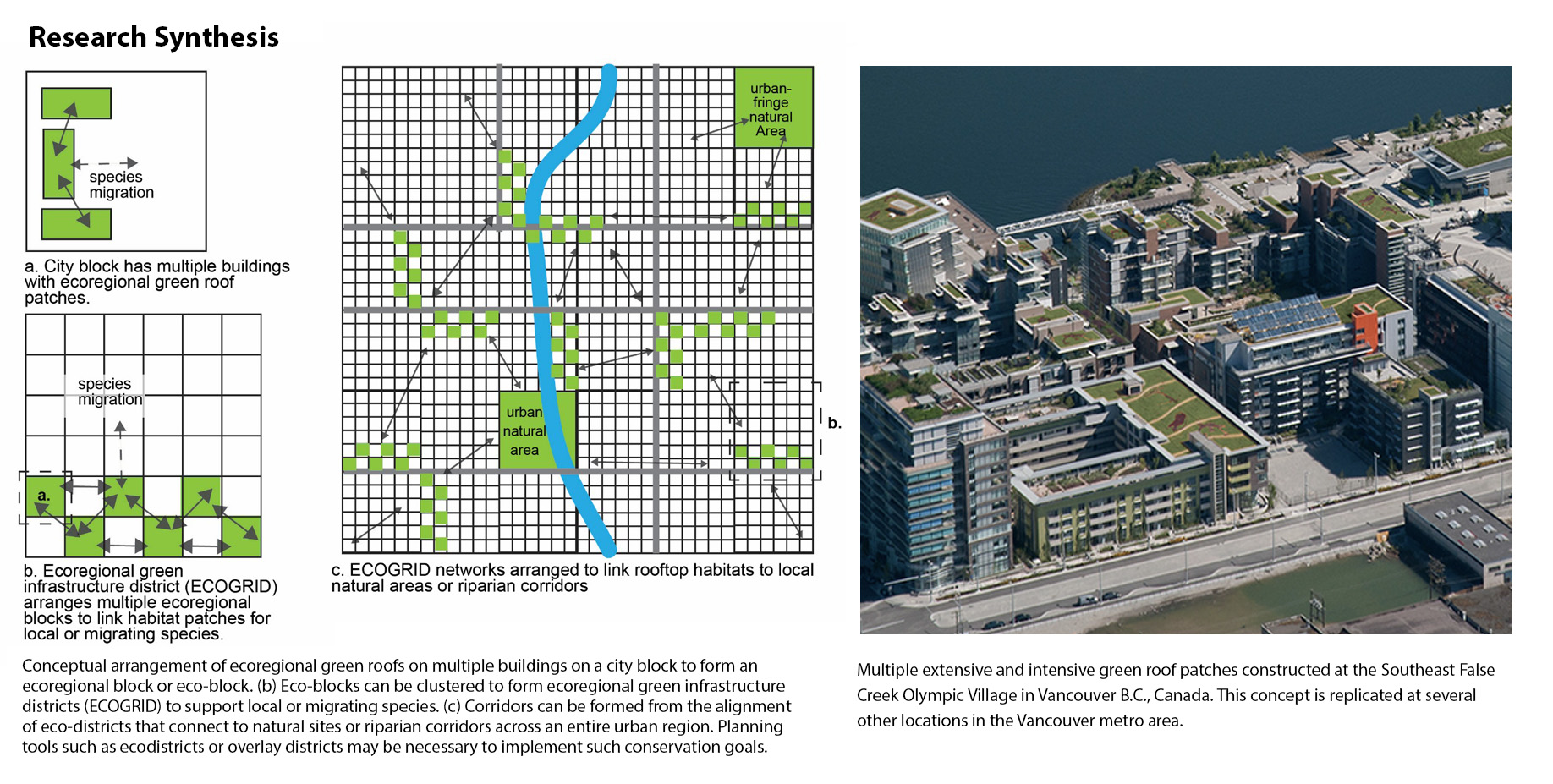Ecoregional Green Roofs: Theory and Application in the Western USA and Canada
Honor Award
Research
Western USA and Canada
Bruce Dvorak, ASLA
A new, 619-page textbook details a wide range of green roof strategies for the western parts of North America across 11 chapters and 73 illustrative case studies. Through analysis of 20 eco-regions, this comprehensive resource highlights the value of local knowledge in the form of people whose experience with local ecosystems can guide native plantings and avoid invasive vegetation, propelling the generic notion of a green roof toward an ecologically local palette. Also featured are designs that demonstrate the value of integration of green roof strategies early in the process as well as some case studies where further initial integration would have led to additional benefit. The book is a highly compelling one-stop shop for baseline green roof standards that allows professionals to reference and compare a host of diverse environmental conditions in a single source.
- 2021 Awards Jury
Project Credits
Dr. Jennifer Bousselot, GRP, Assistant Professor, Department of Horticulture and Landscape Architecture at Colorado State University/Co-author (Chapter 2 Theoretical Development of Ecoregional Green Roofs, Chapter 4 Green Roofs in Shortgrass Prairie Ecoregions)
Dr. Paul Coseo, PLA, Assistant Professor, Landscape Architecture Program at Arizona State University/Co-author (Chapter 5 Green Roofs in Desert Southwest Ecoregions)
Dr. Philippa Drennan, Professor, Department of Biology at Loyola Marymount University, Los Angeles/Co-Author (Chapter 7 Green Roofs in California Coastal Ecoregions)
Daniel Roehr, PLA, Associate Professor, School of Architecture & Landscape Architecture, University of British Columbia, Vancouver, Canada/Co-author (Chapter 10 Green Roofs in Fraser Lowland and Vancouver Island Ecoregions)
Nancy D. Rottle, FASLA, PLA, Professor, Department of Landscape Architecture, University of Washington/Co-author (Chapter 8 Green Roofs in Puget Lowland Ecoregions)
Lee R. Skabelund, ASLA, Associate Professor, Department of Landscape Architecture, Kansas State University/Co-author (Chapter 3 Green Roofs in Tallgrass Prairie Ecoregions, Chapter 11 Ecoregional Green Roofs, Infrastructure, and Future Outlook)
Dr. Olyssa Starry, Associate Professor, Honors College, Portland State University/Co-author (Chapter 9 Green Roofs in Willamette Valley Ecoregions)
Dr. Tom Woodfin, Executive Professor, Department of Landscape Architecture and Urban Planning, Texas A&M University/Co-author (Chapter 6 Green Roofs in Intermontane Semi-Arid Grassland Ecoregions)
David Yocca, FASLA, PLA, Author of Foreword
Dr. Richard K. Sutton FASLA, PLA, GRP, Assistance with reviewing early drafts of the manuscript.
Dr. Stephen Mondonca, Assistance with reviewing early drafts of the manuscript.
Trevor Maciejewski, MLA, Assistance with ecoregion maps and species migration maps in the book.
Dr. Tess Menotti, MLA student, Student ASLA, Assistance with many tables, graphics, maps and the index of the book.
Tiantian Lyu, MLA, Assistance with Figure 2.2 in the book.
Yinghui Chen, MLA, Assistance with Figure 2.3 in the book.
Xin Zhu, MLA, Assistance with Figure 11.12 in the book.
Juliana Pitanguy, Publishing Editor, Springer
Carmen Spelbos, Project Coordinator (Book Production) Springer Nature
Malini Arumugam, Project Co-ordinator (Books) For Springer Nature
Rathika Ramkumar, Sr. Project Manager, Content Solutions SPi Global
Parts of this submittal are from Ecoregional Green Roofs: Theory and Application in the Western USA and Canada, published by © Springer Nature Switzerland AG 2021, Publisher
Project Statement
Ecoregional Green Roofs: Theory and Application in the Western USA and Canada is a new (2021) edited and peer-reviewed book (Springer, Cities and Nature series, 619 pages), that explores how ecoregions can be useful for green roofs. It addresses needs for (1) research on vegetation for green roofs (Blank 2013); (2) research on green roofs in hot and dry climates (Williams et al. 2010); (3) reporting of emerging ideas for green roofs (Sutton and Lambrinos 2015); (4) discussions on native plants for green roofs (Cook-Patton and Bauerle 2012); and (5), green roof research on full-scale applications. Part I introduces the history and theory of ecoregions for green roofs, and research methods. Part II covers case study results and Part III covers lessons learned and future outlook. Through on-site visits, interviews with designers and owners, and reviews of literature, nine authors explore 73 green roof case studies in 20 ecoregions in western North America. Results yield a baseline dataset of 830 taxa, and 357 genera of plants, maintenance requirements, and post-occupancy observations for ecoregional green roofs.
Project Narrative
The Call
There is a clear call in the environmental research community for the discovery of novel forms of green infrastructure that can make cities more resilient, regenerative, biologically diverse, and responsive to the broader needs of humans and urban ecosystems (Tzoulas et al. 2007; Pereira et al. 2010; Kowarik 2011; Weber 2013). Green roofs, for example, provide ecosystem services including stormwater attenuation, energy conservation, reduction of urban heat islands, carbon sequestration, wildlife habitat, and more (Oberndorfer 2007, Sutton 2015; Williams et al. 2014). In North America, research on green roof ecosystems is just emerging on how they can become more sustainable and resilient (Sutton 2015), especially in ecoregions that experience high daytime temperatures and many weeks or months between precipitation events (Williams et al. 2010, Milburn 2014). By observing and learning how vegetation native to ecoregions adapts and thrives in its natural settings, researchers and designers can learn how to make decisions about the resourceful use of native vegetation on green roofs (Butler 2012, Cook-Patten 2012). Also, innovations in the sustainable sourcing and use of water for irrigating green roofs are needed (Lambrinos 2015). Nine authors investigate these issues and more in Ecoregional Green Roofs: Theory and Application in the Western USA and Canada a new (2021) peer-reviewed three-part book published by Springer in their Cities and Nature series (619 pages). A case study method is used in the exploration of 26 conservation site case studies, and 73 green roof case studies that are built and maintained in the central and western United States and Canada.
Part I
This section introduces native landscapes of North America west of the 100th meridian, the development of ecoregions and green roofs, and research goals and methods.
Background and Research Statement
Native Americans have influenced the development and persistence of terrestrial ecosystems across the western landscapes of North America for at least the previous 10,000 years. The abundantly rich, diverse, and beautiful natural environments were integral and ever-present in the lives of the first stewards of North American landscapes. However, between the time of the first exploration of the West by Lewis and Clark beginning in 1804 and the settlement of the West from the late 1800s onward, those same living landscapes were persuasively altered, modified, and/or permanently developed by new tenants of the land. Tallgrass prairie ecosystems, for example, were reduced to isolated patches that represent about one-tenth of one percent of the land in some states where they were once abundant. As land-based conservation practices are slow to be adopted, vegetated rooftops can be designed to be biologically diverse and sustain vegetation that is native to areas where no little or no native habitat remains (Lundholm 2006).
Today, scatterings of conservation sites remain across the West and serve as a source of inspiration for a new generation of green roof designers. However, there is only limited research on the hundreds of green roofs in the West. Ecoregional Green Roofs: Theory and Application in the Western USA and Canada was written to discover and report on the many designs, successes, setbacks, and lessons learned from built projects. Ecoregional Green Roofs was written to begin to fill a gap in the literature for professionals, designers, researchers, students, and educators with an interest in biodiverse green roofs populated with native plants.
Methods
Data for case studies was attained through on-site visits to 26 conservation sites and over 140 green roofs, interviews with owners, designers, and managers of ecoregional green roofs, and reviews of online sources such as websites, reports, and peer-reviewed publications. Case studies explore design concepts, materials, watering and maintenance, wildlife, plant species, and lessons learned.
Part II
Authors investigate the vegetation from 26 case studies of conservation sites representing prairie, desert, montane meadow, coastal meadow, scrub, and sub-alpine ecoregions, and 73 green roof case studies located in urban regions.
Excerpts from Case Studies
Ecoregional green roofs belonged to one of four categories: 1) A green roof where all of the intended vegetation is native to the site, or nearby; 2) A green roof where the intended vegetation is native to one or several adjacent ecoregions (i.e. vegetation from an alpine ecosystem that is planted on a green roof in a valley below); 3) A green roof where the intended vegetation is native to various, but similar ecoregions of North America (west of the 100th meridian); 4) A green roof with vegetation from a combination of native (west of the 100th meridian) and non-native (introduced/exotic) vegetation.
Case studies yielded hundreds of facts and insights. A few highlights include:
• Investigations in 20 ecoregions yielded knowledge of 830 taxa of native plants representing 357 genera on extensive, semi-intensive, and intensive green roofs. Plant forms include trees, shrubs, grasses, wildflowers, bulbs, corms, sedges, rushes, succulents, and low-growing woody vegetation native to dry, mesic, and wet habitats.
• The best performing green roofs had a “champion”, someone that was knowledgeable about the local ecosystems, green roofs, and the ability to anticipate potential outbreaks of unwanted volunteer or invasive exotic vegetation.
• The top-performing living roofs were integrated designs, where living roofs performed essential building functions such as energy reduction, treatment of wastewater (greywater), attenuation of rainwater, and habitat for targeted local, rare, or migrating wildlife.
• Integrated designs required a process where multiple perspectives and skills were considered early in the planning stages of the project. Some projects could have taken advantage of a more integrated design process and were limited because major project decisions were made early in the process without a variety of inputs.
• Due to the inherent differences in ecoregional vegetation across the western U.S. and Canada, some green roofs may require interpretation and education for users to appreciate the aesthetic qualities and functions of some native plants.
Excerpts from “What is Not Conclusive”
• Much of the existing green roof research covers green roof ecosystem services (e.g. energy, water), and there is little research (in most ecoregions) on plants, plant assemblages, maintenance requirements, or biodiversity benefits.
• Some plant nurseries are well-adapted to explore and trial the use of native plants on green roofs. However, few nurseries in the western US and Canada are taking advantage of their potential to lead and team up with local universities to study some of the thousands of plants native to North America.
• Some regions have strong support from local governments, and other regions are just beginning to integrate green roof technology into municipal codes, ordinances, policies, and incentives. There is a lack of research on how green roofs can be employed in municipal policies, regional planning efforts, address resiliency, habitat loss, or climate change.
Part III
This section provides a synthesis, an overview of ecoregional case studies, and future outlook.
Outlook
Aldo Leopold argued for the conservation of biodiversity because the native plants and animals keep the energy circuit open and retain the health, stability, and beauty of ecological systems (Leopold 1966). Aldo Leopold’s land ethic was perhaps intended for the conservation of ecosystems in exurban environments; however, the findings presented in this book demonstrate how living roofs that are planted with native vegetation can provide a full spectrum of ecosystem services and can re-create certain aspects of the energy circuit, improve ecological and human health in urban environments where buildings and pavement dominate. The book’s 73 case studies reveal design objectives, plants, materials, and construction methods used, post-occupancy comments from designers, building owners, and the authors. The chapter summaries serve as a guide and resource for professionals, educators, researchers, and policymakers interested in making resilient and beautiful living architecture in ecoregions spanning from the tallgrass and shortgrass prairies, the Desert Southwest, coastal California, the Pacific Northwest, and Intermountain regions. The eleven chapters of Ecoregional Green Roofs establishes a baseline record of what is known about ecoregional green roofs in western North America.
Plant List
- blue grama Bouteloua gracilis
- prairie Junegrass Koeleria macrantha
- prairie dropseed Sporobolus heterolepis
- pussytoes Antennaria parviflora
- purple prairie clover Dalea purpurea
- sulphur-flower buckwheat Eriogonum umbellatum
- blanketflower Gaillardia aristate
- scarlet gilia Ipomopsis aggregate
- blue flax Linum lewisii
- broadbeard beardtongue Penstemon angustifolius
- largeflower fameflower Phemeranthus calycinus
- prairie sagewort Artemisia frigida
